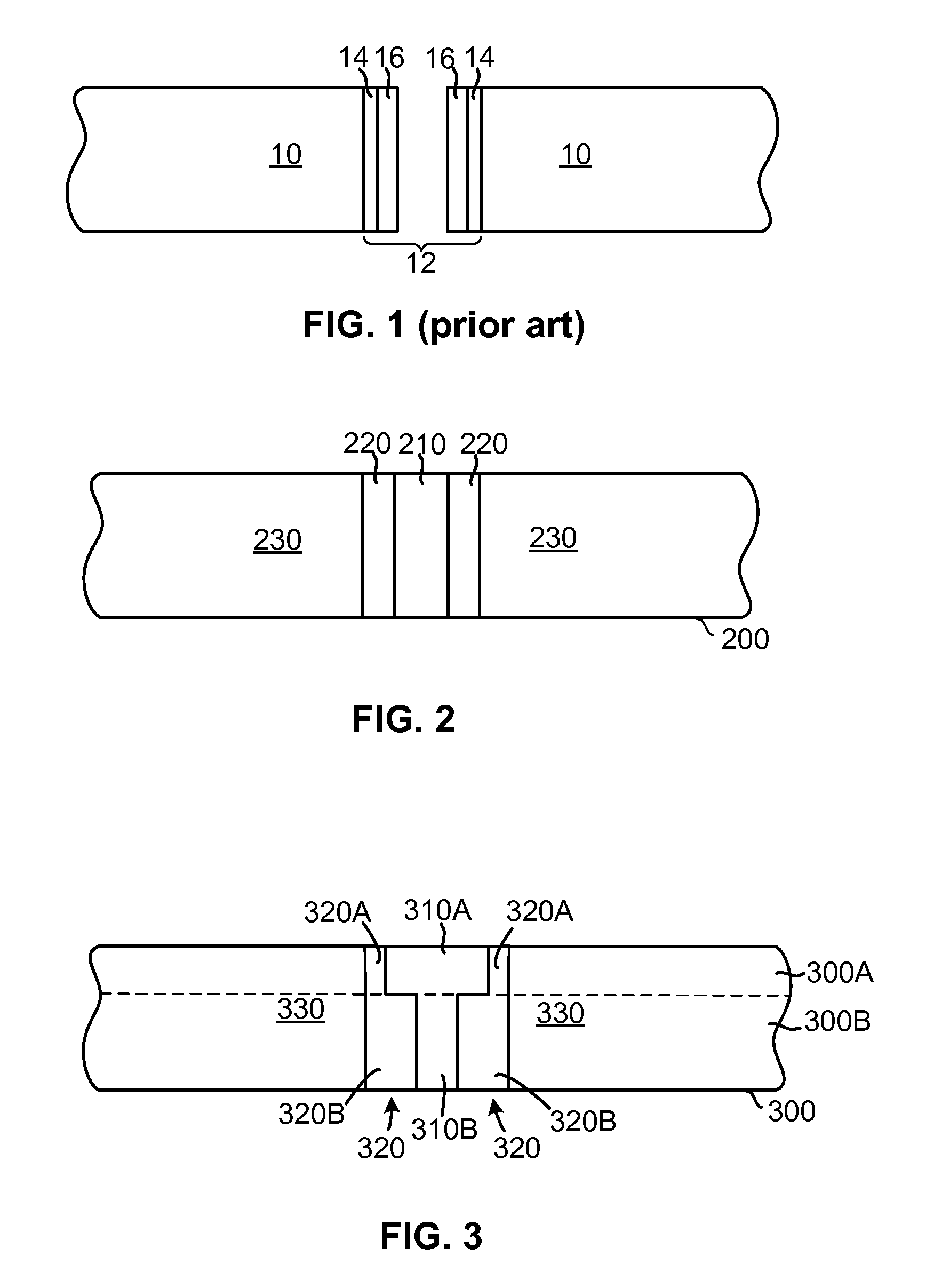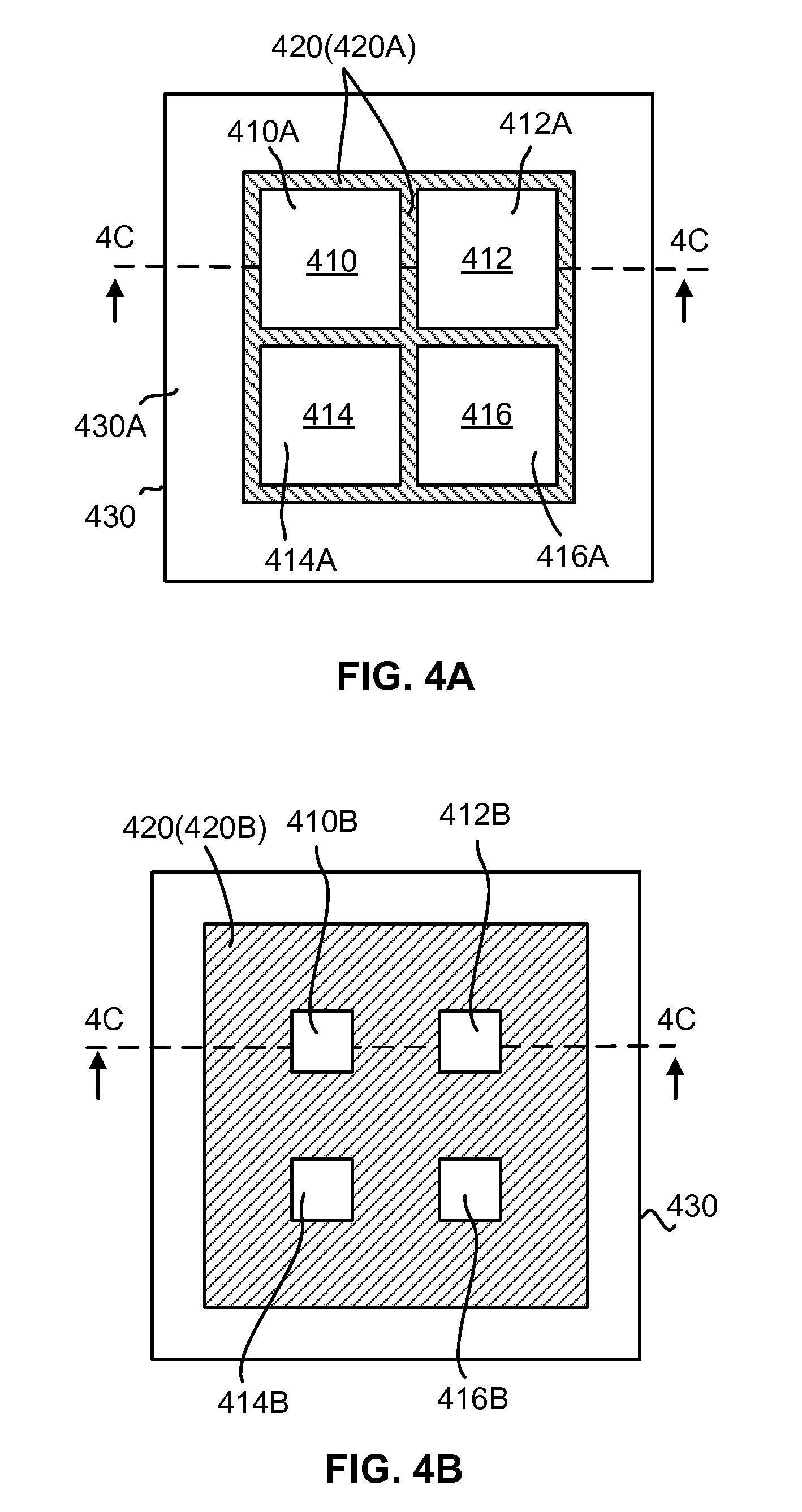Through-wafer interconnection
a technology of through-wafers and interconnections, which is applied in the direction of electrical equipment, semiconductor devices, semiconductor/solid-state device details, etc., can solve the problems of insufficient rerouting alone, complex fabrication process of above-shown through-wafer interconnections, and lack of design optimization freedom in the fabrication process, so as to minimize parasitic capacitance and greater engineering freedom
- Summary
- Abstract
- Description
- Claims
- Application Information
AI Technical Summary
Benefits of technology
Problems solved by technology
Method used
Image
Examples
Embodiment Construction
[0056]The through-wafer interconnection in accordance with the present invention for will be described in detail along with the figures, in which like parts are denoted with like reference numerals or letters.
[0057]In this document, the words “circular” and “annular” only suggest in the broadest sense that a shape has a looped form, a curved shape that is nearly looped, or an arrangement that is generally shaped like a ring, and do not suggest a rounded shape or any other shape in particular, nor does it suggest that the loop or ring is entirely complete or unbroken.
[0058]FIG. 2 is a schematic cross-sectional view of a through-wafer interconnect in accordance with the present invention. The through-wafer interconnect is built in a wafer 200. The through-wafer interconnect includes a conductor 210 passing through the front side (top) of the wafer 200 to the backside (bottom) of the wafer. The conductor 210 is surrounded by an insulator 220, and both the conductor 210 and the insulato...
PUM
 Login to View More
Login to View More Abstract
Description
Claims
Application Information
 Login to View More
Login to View More - R&D
- Intellectual Property
- Life Sciences
- Materials
- Tech Scout
- Unparalleled Data Quality
- Higher Quality Content
- 60% Fewer Hallucinations
Browse by: Latest US Patents, China's latest patents, Technical Efficacy Thesaurus, Application Domain, Technology Topic, Popular Technical Reports.
© 2025 PatSnap. All rights reserved.Legal|Privacy policy|Modern Slavery Act Transparency Statement|Sitemap|About US| Contact US: help@patsnap.com



